The main types of art are visual, applied, performing, craft, digital, conceptual, literary, folk, and martial arts. The different types of art express human creativity through a combination of elements, mediums, and intentions. Some art forms are visual, incorporate physical movements, or serve practical or cultural functions. However, the definition isn’t rigid, as art forms often intersect. Therefore, the nine types of art share characteristics with other types but still present unique qualities that warrant distinction.

The nine forms of art are summarized by how humans interact with them, their mediums, distinct elements, and subtypes. The list below outlines the nine art types.
- Visual arts: Visual arts convey ideas through optical engagement and visual elements such as color, shape, balance, and unity. Visual arts may be two-dimensional or three-dimensional. Subtypes of visual arts include painting, sculpture, drawing, and photography.
- Applied arts: Applied arts offer both aesthetic and functional properties. This category highlights how humans seek to blend beauty into mundane objects, conveying both expression and practical usage. Architecture, graphic design, fashion, ceramics, and jewelry design are all examples of applied arts.
- Performing arts: Performing arts use physical movements to evoke emotions and portray narratives for an audience. Performing arts are distinct from other art forms because they consist of live and recorded activities rather than static objects. Theater, dance, film, music, and opera are subtypes.
- Literary arts: The literary arts encompass the written form, ranging from novels, poetry, essays, and letter-writing. Literary arts rely on the creator’s linguistic skills and the reader’s imagination to communicate ideas and elicit reactions.
- Conceptual art: Conceptual art defies traditional categorization by emphasizing the idea and intent over the aesthetic compositions. Conceptual art provokes conversation and compels viewers to think about the artist’s vision.
- Folk art: Folk art is rooted in a community’s cultural and creative traditions, encompassing different mediums and purposes. Folk art is similar to applied and craft art because it often serves a utilization function but holds separate categorization because it encapsulates cultural, religious, or ethnic qualities.
- Craft art: Craft art involves the creation of objects through specialized disciplines. Craft is often a hobby but an art form because it’s a creative human expression. Additionally, craft ranges broadly, from glassblowing and woodworking to knitting and embroidery.
- Martial arts: Martial arts are physical forms of expression utilizing the body and combat to convey philosophies, ideas, and emotions. Martial arts parallel the performing arts but remain separate because of their combative elements and more abstract definition of art.
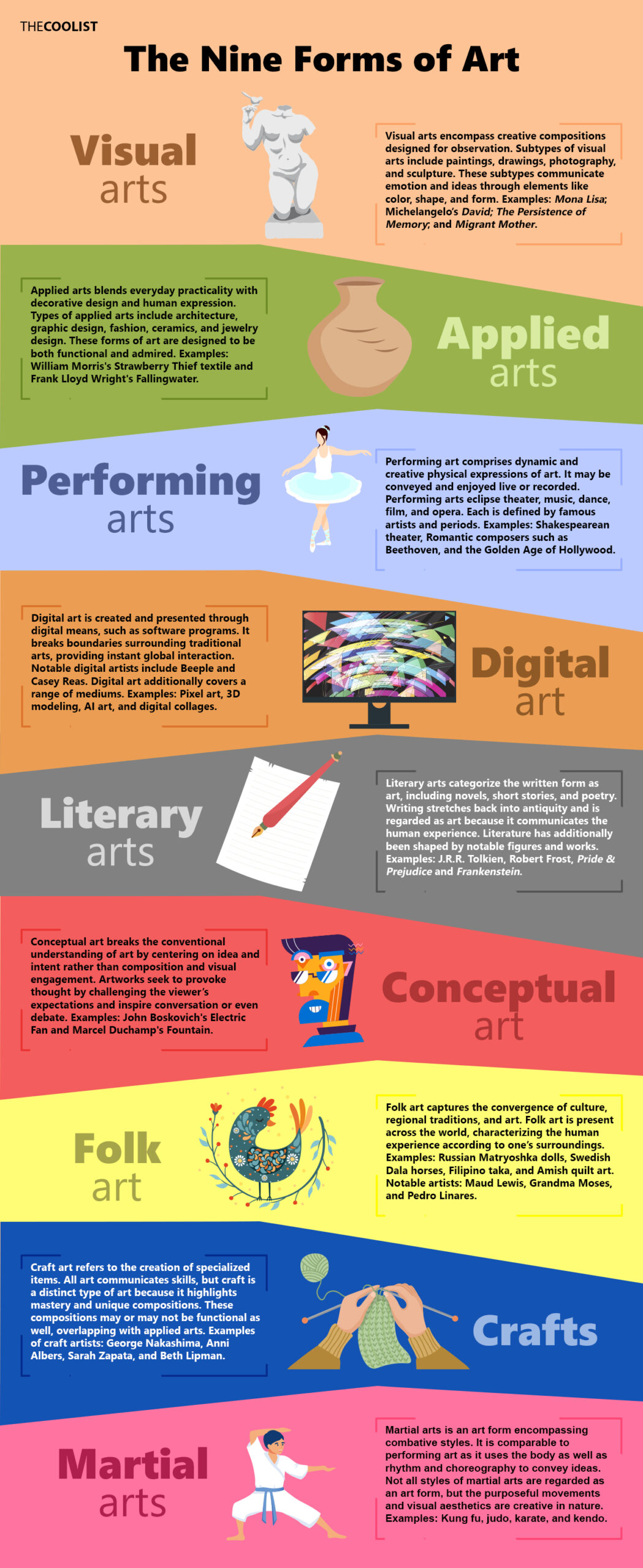
The definition and classification of art are broad, mirroring the diverse and converging nature of the art types listed previously. Different compositions serve different purposes, leading to distinct movements, figureheads, and usages across society. Below, we’ll explore the classification of art and how to define them in more detail.
1. Visual arts

Visual arts refer to creative compositions such as paintings and sculptures meant to be observed. This art category uses visual elements like color, shape, balance, and unity to convey ideas and elicit emotions in viewers. Visual art is distinct from other types of art because it relies on optical engagement. That said, visual composition often transcends mediums, and there is no strict definition because art often uses our sense of sight as a primary or accompanying vehicle of expression.
Visual art is intrinsic to human history—spanning from ancient cave paintings like Lascaux in France, dating back 17,000 years, to Venus de Milo, which was created in the 4th century BCE Greece and rediscovered in 1820. Visual art goes on to be foundational to movements across recorded history, with distinctive pieces characterizing the movements. For example, the Renaissance produced Leonardo da Vinci’s Mona Lisa, Michelangelo’s David, and Sandro Botticelli’s Birth of Venus, regarded as history’s most famous artworks and artists.
Meanwhile, the 1920s to 1950s Surrealism movement conveys visual art’s experimental capabilities, like that of The Persistence of Memory by Salvador Dalí. On the other hand, famous photos such as the Great Depression’s Migrant Mother by Dorothea Lange highlight how visual art evokes emotions and documents history in an impactful way.
What are the types of visual art?
The four main types of visual art are painting, sculpture, drawing, and photography. The list below summarizes these types as visual compositions.
- Painting: Painting is a visual art form in which paint pigment is applied to a surface. It has existed since pre-recorded history as a method of human expression. Painting is fundamental to art, spanning across art movements and facilities experimentation.
- Sculpture: Sculptures are physical, three-dimensional expressions of visual art. Sculpting has existed as an art form since antiquity, with the advancement of technology and creative movements allowing for more ambitious depictions and expressions of thought.
- Drawing: Drawing is a fundamental form of visual art. It typically refers to simple, non-paint compositions. Drawing isn’t specific to any movement or philosophy as artists often use it as a study method, though it nonetheless acts as a tool of expression.
- Photography: Photography is visual art that involves capturing real-life subjects and scenes. Photography often acts as art and records, capturing everything from mundane to impactful movements.
Painting

Paintings are a subtype of visual art consisting of two-dimensional compositions of applied pigments. Artists use a range of elements and styles to evoke emotions and express ideas through paintings. Watercolors, acrylic, gouache, and oil paints are a few of several painting techniques used to visually communicate with an onlooker.
Additionally, this subtype is one of the most distinct forms of human expression and exists at the forefront of creative movements. As a result, there is no single art movement where painting was the singular focus. Creative trends gave rise to specific mediums, techniques, or philosophies that influenced pieces at the time, but painting is a staple of art. For example, the Mona Lisa by Da Vinci, Starry Night by Van Gogh, The Kiss by Gustav Klimt, and American Gothic by Grant Wood are not only among the most famous paintings in the world—but they’re additionally from different eras, highlighting the fundamental role of paintings in art.
Sculpture

Sculpture is an art type encompassing three-dimensional visual compositions. Sculptures are formed by manipulating organic or inorganic materials such as clay, stone, plastic, and metal. The three-dimensional quality of sculpture adds a physical element unavailable in two-dimensional formats like paintings. However, like paintings, sculptures have been a form of human expression since antiquity, ranging from monumental pieces like the Sphinx of Giza to more compact works like the Venus of Willendorf.
Three-dimensional compositions have played a role in art movements, influencing skilled artists and developing some of the most famous sculptures in history. For instance, the Renaissance adapted the Greek and Roman sculpting approach, producing idealized forms like Michelangelo’s David. In contrast, contemporary movements like Modernism embraced abstraction, as seen in Barbara Hepworth’s Two Forms (Divided Circle).
Drawing

Drawing is a two-dimensional art form encompassing non-paint compositions. Drawing can consist of minimalist sketches or be as complex and varied as a painting, and the complexity of either form is subjective and varies according to the artist’s intention and style. Drawings use non-paint pigments such as graphite, pastels, and ink.
Additionally, artists draw to study or plan a larger composition, such as a painting or sculpture. The practice isn’t attached to any particular movement or creator but is understood as a fundamental art skill. Even so, famous drawings exist as groundwork for large-scale work, artistic studies, or a completed piece. Notable examples include Vitruvian Man by Leonardo da Vinci, Road in Etten by Vincent van Gogh, and The Jockey by Henri de Toulouse-Lautrec.
Photography

Photography is a visual medium that captures real-life scenes through light-sensitive film or digital devices. Photography acts as a method of expression and documentation. This medium is implemented across various formats, such as magazines, historical archives, social media, and posters. Consequently, photography is an art form, but not all photos are art.
The medium is distinct from other visual compositions due to its history. The concept of photographic devices dates back to antiquity through the camera obscura, a darkened room or box that projected images through a hole. The practice evolved into an art form following the invention of the camera and the first permanent photograph created by Nicéphore Niépce. Art photography gained traction through various movements, including Pictorialism, Modernism, and contemporary photography. Pictorialism was particularly significant as it advocated for photography’s role in art, being a vessel for expression and emotions. Famous examples have spawned from this ideal, giving way to acclaimed pictures such as The Steerage by Alfred Stieglitz, Tetons and the Snake River by Ansel Adams, and the Lunch atop a Skyscraper promo.
2. Applied arts
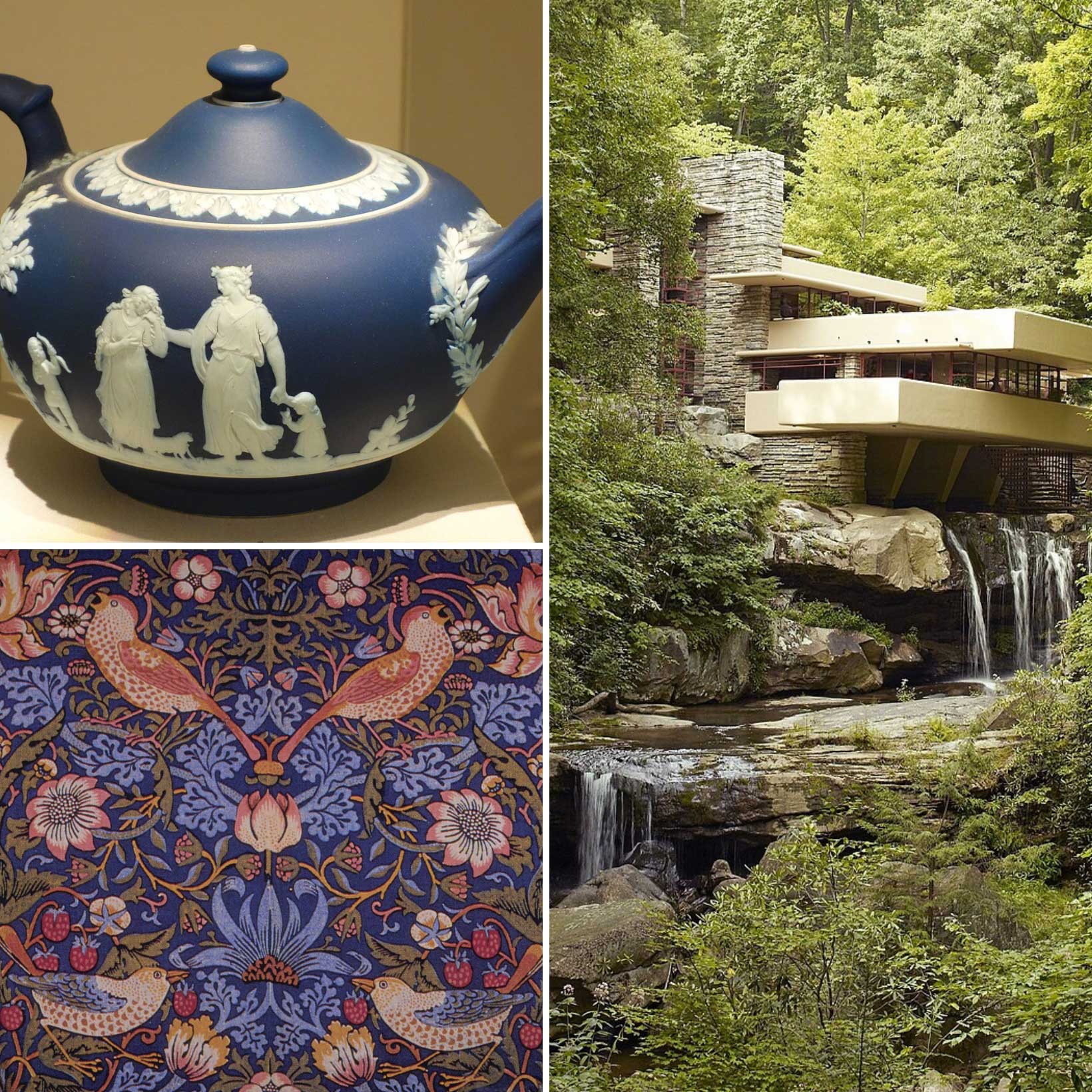
Applied arts is an art form bridging utilitarian function with aesthetic appeal. Applied arts often overlap with fine art due to the intentional implementation of decorative design. However, the two arts are distinct because of how humans interact with applied arts compared to purely creative compositions. The latter generally provides no practical usage and exists to be appreciated or convey ideas. Meanwhile, applied arts such as architecture, ceramics, and textiles are typically designed to be used and admired. This is displayed in famous examples like Strawberry Thief by William Morris, Fallingwater by architect Frank Lloyd Wright, and pottery designs by Josiah Wedgwood. The examples can practically function as textiles, structures, and ceramics but remain aesthetically pleasing and culturally noteworthy.
The advancement of technology and creative movements shaped applied arts throughout history. For example, the Arts and Crafts movement of the late 19th and early 20th century endorsed a return to traditional craftsmanship, valuing both functional and aesthetic quality. Meanwhile, movements like Art Nouveau implemented naturalistic forms to create visually striking everyday objects, whereas Art Deco emphasized lavishness and American consumerism in decorative design. Conversely, the Bauhaus movement partnered mass production with artistry to create functional yet aesthetically pleasing pieces. Today, technology remains pivotal to applied arts, delivering functional beauty across kitchen items, fashion, vehicles, architecture, and more.
What are the characteristics of applied arts?
Below is a list detailing the six characteristics of applied arts: function, context, expression, quality, distinction, and variations.
- Functionality: The functionality of applied arts is multifaceted. The art form merges practical usage and aesthetic appeal into everyday objects, transforming them into visually pleasing items that stimulate the senses, convey meaning, and elevate the desirability of a purchase.
- Context: The context of applied arts arises from historical and cultural purposes, reflecting the evolving needs, trends, and values across different periods and regions. For example, applied arts from the Art Nouveau period reflected the growing trend toward naturalism and appreciation of decorative arts. Moreover, applied arts have existed since antiquity, with ancient peoples adding embellishments to practical items such as pots and water pitchers.
- Expression: Applied arts express how humans value beauty even in mundane, utilitarian objects. This allows everyday items to be vehicles of creativity, identity, and philosophical ideals. Artists such as William Morris, René Lalique, Josiah Wedgwood, and Frank Lloyd Wright have helped propel these sentiments through their work.
- Quality: Applied arts encompasses various mediums, leading to similarly varied quality. Quality ranges from one-of-a-kind handmade pieces to efficiently produced, mass-manufactured items. This diversity in quality adds richness to the field, accommodating different preferences and purposes.
- Distinction: Applied arts is a distinct form of creative expression. It emphasizes functionality and beauty equally, craft art emphasizes discipline mastery, and visual composition highlights aesthetics. Even so, applied arts often intersect with other forms of art, depending on the creator’s motivations.
- Variations: Architecture, graphic design, fashion, ceramics, and jewelry design represent the diverse landscape of applied arts. Each encapsulates the functional and aesthetic elements that define applied arts as a creative field.
Architecture
 Examples of architecture in applied arts include the Empire State Building, Hagia Sophia, and Guggenheim Museum Bilbao
Examples of architecture in applied arts include the Empire State Building, Hagia Sophia, and Guggenheim Museum BilbaoArchitecture is the process of designing the aesthetic and practical composition of structures. Architecture is an applied art form because it blends beauty with the necessity of habitation, appealing to the human gaze while providing shelter and other basic needs. Additionally, structures communicate abstract ideas and beliefs. Combining creative sense and engineering brings such concepts to life, leading to cultural and historical symbols in architecture. Examples of this span human history, starting with the ziggurats of ancient Mesopotamia and the Byzantine Empire’s Hagia Sophia—to technologically advanced projects like the Empire State Building and Guggenheim Museum Bilbao.
Additionally, artistic movements shaped architecture as an art form. Some notable movements include the Gothic, Neoclassical, Art Deco, and Deconstructive trends. These movements led to distinct styles and shaped the role of architects as artists and distinguished engineers such as Frank Lloyd Wright, Antonio Gaudí, Ludwig Mies Van der Rohe, and Frank Gehry.
Graphic design

Graphic design is a subtype of applied art that seeks to convey specific messages. Graphic designers use curated techniques, stylistic elements, and targeted audiences to communicate these messages. Moreover, graphic design is intrinsic to modern life, blending fine art and commercialism to appeal to the human eye. Noteworthy examples of visually appealing and communicative graphic design include the Works Progress Administration (WPA) poster of the 1930s and Alphonse Mucha’s commercial posters of the 1890s. More recognizable modern selections include the “I Love New York” slogan by Milton Glaser and Haddon Sundblom’s Coca-Cola Christmas ad.
The history of graphic design as an art form is intermingled with the invention of writing and illustration. However, graphic design did not evolve into a more widely circulated art form until the 15th-century European printing press. After the 15th century, graphic design became an interdisciplinary branch influenced by various art movements. For instance, the Bauhaus movement emphasized the appeal of typography, whereas the Art Deco period shaped the visual appeal of advertisements and cultural lavishness.
Fashion design

Fashion design is the artistic discipline of creating clothing, handbags, footwear, and other accessories. Fashion is an applied art form because designers consider both the functionality of the item and its aesthetics. Designers employ materials and techniques such as organic cotton or environmentally friendly processes to convey artistic vision and reflect consumer needs. Fashion ranges from ready-to-wear items to haute couture, the latter correlating with fine art—though fashion, in general, is a vehicle for self-expression and trends. Fashion designers such as Elise Saab, Vivienne Westwood, Alexander McQueen, Coco Chanel, Christian Louboutin, and Karl Lagerfeld influenced trends. For example, the little black dress by Chanel, Christian Louboutin’s red bottom high heels, and the Burberry trench coat are cultural icons.
Moreover, historical and artistic movements define fashion. The late Victorian era birthed haute couture, as seen in the opulent designs of Charles Frederick Worth. The Roaring Twenties ushered in the Jazz Age and Art Deco, influencing flapper fashion. Meanwhile, fast fashion revolutionized design to reflect the mercurial nature of trends, accommodating various styles such as minimalism and Y2K style.
Ceramics
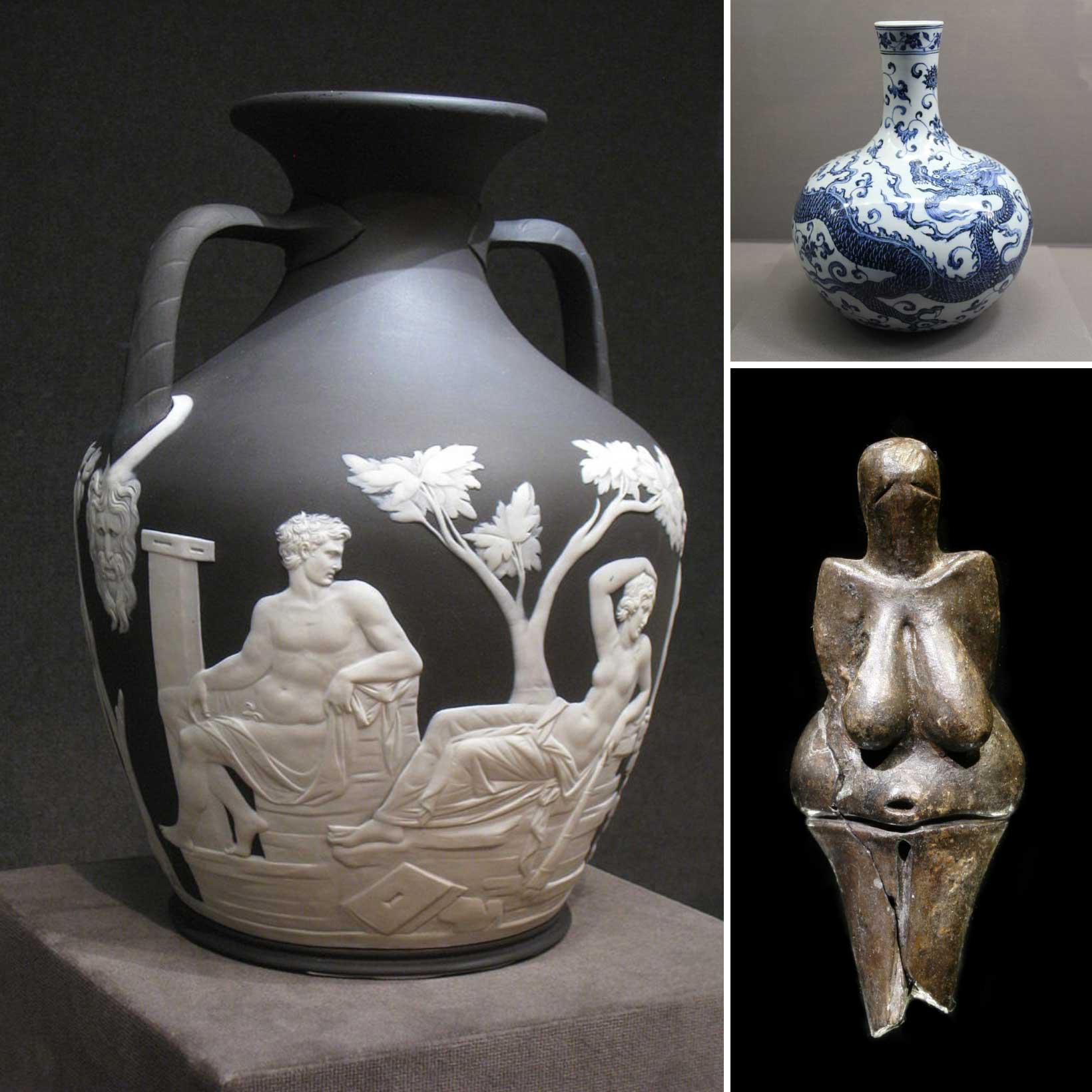
Ceramics is an applied art form of molding, glazing, and firing objects made from clay and other materials. Ceramics range from earthenware to porcelain, often functioning as a work of art and a usable object like tableware. Ceramics have long been a part of human history and are consequently influenced by creative trends and distinguished artists. For example, the ceramic sculpture Venus of Dolní Vestonice from the Paleolithic period was likely an aesthetic object and a religious symbol.
Meanwhile, Neoclassical artist Josiah Wedgwood innovated ceramic practices, broadening its application as both an art form and a commercial product. Other periods, such as the Arts and Crafts movement and the Studio Pottery trend, emphasize ceramics’ artistic prospects through high-quality craftsmanship and experimentation, respectively. Today, ceramics art is marked by notable figures such as Beatrice Wood, Grayson Perry, Betty Woodman, and Lucie Rie and exemplified by iconic works such as Chinese porcelain from the Ming dynasty.
Jewelry design

Jewelry design is the art of creating ornamental pieces such as necklaces and earrings. We categorize jewelry design as an applied art form because the resulting pieces function as personal embellishments. Humans often use jewelry to express themselves, showcase wealth, communicate a sentiment, fasten clothes, or relay religious fervor. Designers employ precious and decorative materials to fulfill these functions while retaining aesthetic appeal.
Jewelry’s function as an applied art is evident throughout history and creative trends. For example, the Etruscan jewelry set from the Camposcol necropolis of Vulci featured in the Gregorian Etruscan Museum was likely used to express wealth and spirituality. Meanwhile, Fabergé Eggs originated in 1885 and served as opulent expressions of Russian sentiment and luxury. Movements like Art Nouveau, Art Deco, and contemporary trends—paired with distinguished jewelry designers like Cartier, Tiffany & Co., and Chopard—revolutionized jewelry design by marrying functionality with aesthetic and commercial allure.
3. Performing arts
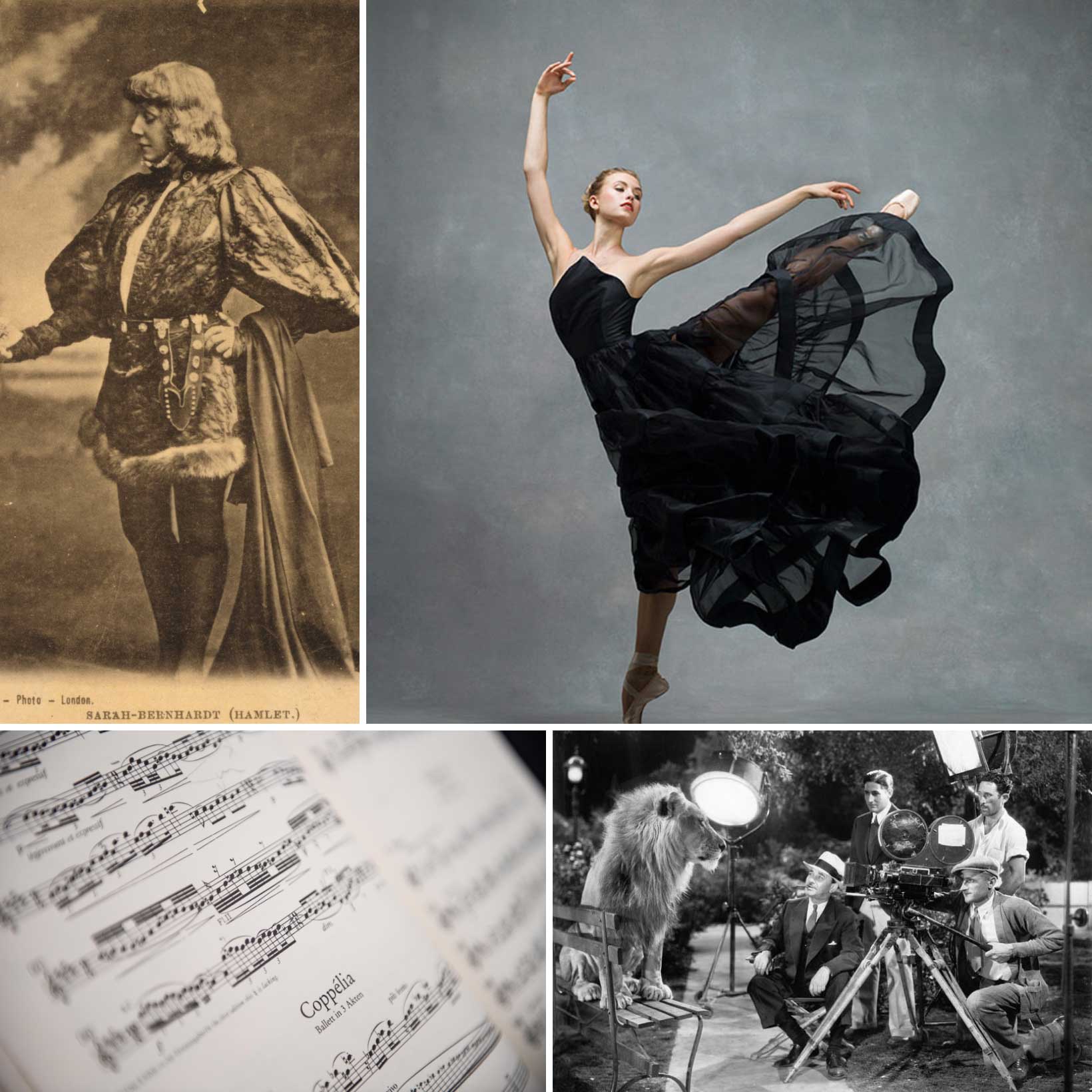
Performing arts is a form of creative, physical expression typically performed for a live audience. The performing arts are categorized as an art form because it utilizes the human body to convey sentiments, evoke emotions, and represent cultural or religious symbolism. It is additionally distinct from other art forms because the produced compositions are live or recorded movements rather than objects, providing versatile means of expression. Performances often incorporate other forms of art, such as fashion, jewelry, and the visual arts, to aid in or elevate the compositions’ aesthetic appeal and narrative symbolism. Performances additionally draw inspiration from other works of art, most notably adapting the literary arts into a production of some kind.
The performing arts include theater, music, dance, film, and opera, reflecting its scope. These individual art forms were inspired or influenced by different and intermingling art periods and marked by prominent figures. For instance, theater is epitomized by William Shakespeare’s work and thrived during the English Renaissance. Music is shaped by different historical periods, including the Romanticism movement, which gave rise to Ludwig van Beethoven, Franz Schubert, and Frédéric Chopin. Dance is a similarly broad field. For example, specializations such as ballet witnessed a golden age under choreographers like George Balanchine and Sir Frederick Ashton.
Meanwhile, one of the most influential film eras was the Golden Age of Hollywood, producing iconic films like “Casablanca” and “Gone with the Wind,” and figures such as Humphrey Bogart, Clark Gable, and Joan Crawford. Finally, in opera, the Verismo Opera period led to Pietro Mascagni’s “Cavalleria Rusticana” and Ruggero Leoncavallo’s “Pagliacci,” showcasing the emotional depth and realism of the movement.
What are the types of performing arts?
The different types of performing arts include theater, music, dance, film, and opera. The list below summarizes each subtype.
- Theater: Theater is a performing art that communicates ideas through dialogue, physical movements, and the integration of other art forms. The exact origins are unknown, but the earliest record spans back to ancient Greece and the Shang Dynasty. Famous examples of theater include the Theban plays, Shakespearian work, and Lin-Manuel Miranda’s Hamilton.
- Music: Music is a subtype of performing arts encompassing the intentional manipulation of sound. The motivation of music is to express and evoke emotion, as well as share ideas and beliefs. Its origins are interwoven with human history and influenced by movements and distinguished musicians, such as Michael Jackson and the Beatles.
- Dance: Dancing consists of purposeful body movements which may be improvised or choreographed. Dancing is interconnected with other arts, namely music, to express emotion and creative vision. The history of dance is diverse, with prehistoric origins possibly rooted in religious or playful practices. Different disciplines of dance additionally exist, each with distinct characteristics and movements.
- Film: Film conveys narratives onto a screen by blending other practices with storytelling. Filmmaking encompasses various genres, each representing different motivations. Additionally, the art of film is shaped by distinct movements, many of which gave way to cultural iconic pieces such as Nosferatu, Casablanca, and Parasite,
- Opera: Opera originated in 16th-century Italy as a dramatic marriage between music and theater. Opera expresses narrative through song and movement, often blending other art forms to enhance the experience and communicate themes. Notable operas include The Marriage of Figaro, Pagliacci, and Peter Grimes.
Theater

Theater is a type of performing art incorporating acting and stage settings. The theater is typically conducted for a live audience and covers an array of genres and themes, ranging from tragedies and comedies to one-man shows and musicals. This type of art additionally communicates ideas through dialogue, physical movements, and integration of art forms. For example, theater often uses music, fashion, and visual compositions to enhance its experience.
The origins of theater are unclear, but early records point to classical Greek theater in the 5th century BCE and Chinese theater in the Shang dynasty around the 16th century BCE. Greek theater produced iconic works like the Theban plays, while Chinese theater influenced traditional performing arts. Artistic trends shaped theater as well. For example, the English Renaissance produced significant Western plays, including Shakespeare’s masterpieces. Meanwhile, the Realism movement prompted realistic portrayals of the human struggle, such as that seen in work by Henrik Ibsen’s Doll’s House. Modern theater is thematically broad, with composers and playwrights like Lin-Manuel Miranda, the creator of Hamilton, being amongst the most significant figures.
Music

Music is a form of art that involves the intentional arrangement of sounds to convey and evoke emotions. It encompasses various elements, such as rhythm, melody, and harmony, utilizing man-made instruments or the human body (namely voice) to create a pleasing composition. Music additionally converges with other performing arts. For example, opera is a collaboration of music and theater, while dance typically accompanies melodies. Musical compositions are enjoyed live or recorded, incorporating concert halls, street performances, and open-air venues.
Various genres, cultural influences, social trends, and notable figures define music as an art form. For example, the Romantic era influenced classical music and created formative pieces such as Beethoven’s “Moonlight Sonata.” Meanwhile, folk music encapsulates long-standing regional traditions such as that of varied styles of Bantu music in Central and Southern Africa. Western movements reflect cultural themes, such as the mysticism of Delta blues in songs like “Me and the Devil” by Robert Johnson. Conversely, the history of rock and pop was marked by icons such as Queen and Michael Jackson, who respectively shaped their generation through their unique sounds mixed with fashion and visual art.
Dance

Dance is a subtype of performing arts that comprises purposeful body movements. These movements often express emotions or elicit reactions from viewers. Dancers implement choreography, storytelling, cultural practices, or improvisation to convey artistic narratives and explore themes ranging from the human experience to enhanced visual experiences. Dancing typically involves other forms of performing arts, namely music, though theater, opera, and film often utilize dance. Even other types of human expression, such as martial arts, convey or merge dancing movements as part of a discipline or creative endeavor.
The history of dance is diverse, emerging from prehistoric practices which may have been religious or playful. The development of dance thereafter is associated with different styles, periods, and top dancers. For example, ballet originated during the Italian Renaissance and experienced a golden age during the mid-20th century. Choreographers such as George Balanchine and Sir Frederick Ashton were significant figures alongside dancers Margot Fonteyn and Rudolf Nureyev.
Hip-hop emerged in the Bronx during the 1970s and integrated with the modern musical scene. Meanwhile, the waltz stems from the late 18th century Viennese and has since evolved into the iconic ballroom dance style. Contemporary dance varies and pulls from different movements but is marked by figures such as Fred Astaire and Gene Kelly and musicians like Shakira and the BTS boy band.
Film

Film refers to the art of cinema and the process of transforming narratives into visual media. Filmmaking blends various practices such as acting, storytelling, photography, fashion, music, and more to create entertaining and engaging productions. This art form adapts other mediums, such as literature and theater, to expand the storytelling trend. The practice is diverse in its functions and consequently prompts questions on whether all motion pictures are artworks or products. Nevertheless, films are typically categorized as performing art because it’s a mode of human expression and innovation. For instance, A Trip to the Moon and Nosferatu were major feats in filmmaking, respectively influencing the science fiction and horror genres.
Film’s distinction as an art form is evidenced by its impact on historical periods. The early 20th century saw the peak of silent films, with comedic actors like Charlie Chaplin and experimental movements like German Expressionism elevating film as art. This trend continued into the 1930s and 1940s during the Golden Age of Hollywood. Icons such as Humphrey Bogart, Clark Gable, and Joan Crawford defined the period, drawing global fame, whereas films such as “Casablanca” and “Gone with the Wind” became classics due to their masterful products. Meanwhile, modern films such as Bong Joon-ho’s “Parasite” exemplify contemporary cinematic artistry, inspiring cultural sensations and inventive narratives.
Opera

Opera is an art form that merges theater and music. Opera’s marriage of other types of art additionally includes visual arts, fashion, and dance. The leading creators of an opera—a composer and a librettist—merge these elements to enhance the dramatic emotions, themes, and ideas conveyed across genres. We see this in the comedic opera buffa, the opulent, four to five-act grand opera, the dialogue-driven German singspiel, the more downplayed operetta, and the intimate chamber opera. Each is characterized by a specific tone, narrative style, thematic focus, and combination of elements that make opera a distinct art.
Opera originated in Italy in the late 16th century with Dafne by Jacopo Peri. Thereafter, opera is marked by various movements and figures. For example, the best operas include The Marriage of Figaro by Wolfgang Amadeus Mozart from the classic period; La Traviata by Giuseppe Verdi of the Romantic era; Cavalleria Rusticana by Pietro Mascagni and Pagliacci by Ruggero Leoncavallo of the post-romantic period; and Peter Grimes by Benjamin Britten of British contemporary opera.
4. Digital art

Digital art is the process of creating and displaying art through digital means. Pixel art, 3D modeling, digital painting, AI-generated compositions, NFTs, and computer-generated imagery (CGI) are all examples of digital art. Some compositions may exist on a physical medium, like print, but remain available or were created digitally. This allows for instant sharing, global outreach, and dynamic interaction through online platforms and virtual spaces that are otherwise unavailable for traditional forms of art. Digital compositions break conventions about the practice of art but remain a valid form of creativity because they still convey and evoke emotions, ideas, and conversations and facilitate creative expression.
Digital art has additionally been influenced by different art movements and marked by distinguished creatives, just as in traditional fields. For example, postmodern art deconstructs conventions and inspires diverse media, providing an experimental framework for digital art. Although not an art movement in the traditional sense, the advent of artificial intelligence and non-fungible tokens (NFT) like the Bored Ape collection has influenced how digital art is produced, distributed, and discussed.
Meanwhile, notable digital artists such as Beeple, or Mike Winkelman, and his composition, Everydays: the First 5000 Days, have gained prominence by showcasing the potential of crypto art. Other creators include Casey Reas, known for his generative art installations, and Manoloide, recognized for his digital surrealism. Each of these artists contributes to the diverse and expanding digital art landscape, demonstrating the medium’s versatility and capacity for innovation.
What are the types of digital art?
The different types of digital include digital painting, digital photography, pixel art, 3D modeling, AI art, NFTs, and digital collages. The list below provides an overview of each art type and their characteristics.
- Digital painting: Digital painting uses programs to simulate traditional painting techniques. The resulting compositions are diverse in style and intentions, eliciting emotions and often shared with a broad audience. The medium originates from the development of graphic editing software, such as Adobe Photoshop or Corel Painter.
- Digital photography: Digital photography captures real-life scenes and expresses emotions, ideas, or beliefs through electronic devices like digital cameras and cell phones. This medium began with Steven Sasson’s electronic Kodak camera, gaining traction with the commercialization of digitized capture through the 1990 Dycam Model.
- Digital collage: Digital collage is a deviation from traditional collage work in which images are compiled and manipulated digitally. This is done to convey a unified narrative or aesthetic. Digital collage became an art form with the advent of graphic editing software.
- Pixel art: Pixel art is a digital composition characterized by distinct square pixels. This art form originates from early video games such as the original Pac-Man and Donkey Kong arcade games, where limited graphical capabilities led to blocky but visually distinct characters. Pixel art evokes this distinction, often expressing an element of nostalgia.
- 3D modeling: Three-dimensional modeling uses software programs like Blender or Autodesk May to create digital objects. 3D modeling has broad purposes, ranging from animation to game design, and subsequently expresses varied motivations. 3D modeling was made possible by creating computer-aided design (CAD) applications in the 20th century and elevated by texture mapping, another form of digital composition.
- AI-generated art: AI art refers to digital artworks created by artificial intelligence algorithms and machine learning to cultivate visual, musical, or otherwise creative compositions. AI art prompts discussion about art qualifications and algorithm-generated compositions’ ethics.
- Non-fungible tokens (NFTs): NFTs are not a distinct art form but a blockchain attached to digital compositions to demonstrate ownership. NFTs correlate to crypto art and cryptocurrency, spawning unique compositions and conversations about the validity and necessity of digital ownership.
5. Literary arts
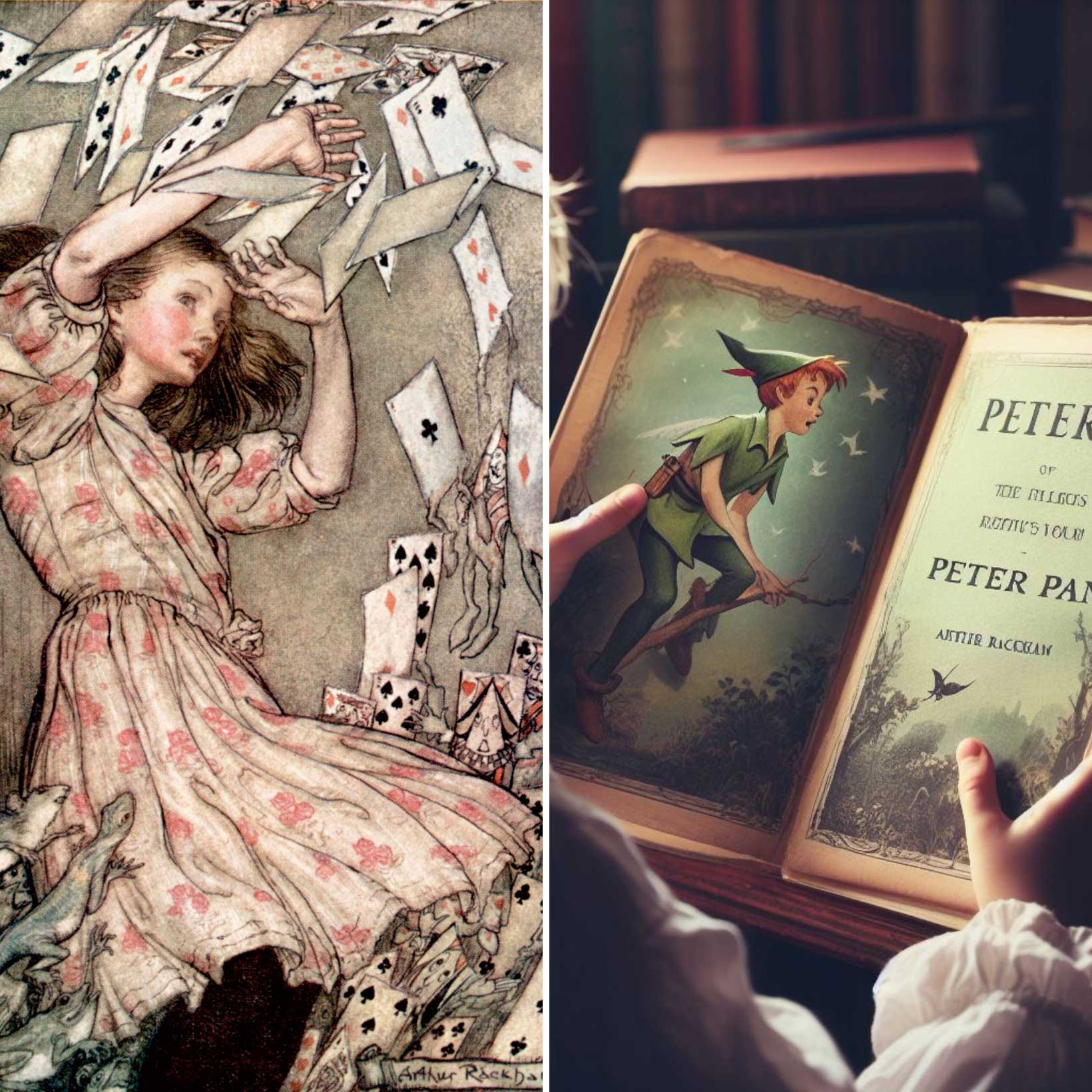
Literary arts refer to written compositions, otherwise known as literature. Literary arts include novels, poetry, essays, graphic novels, and other forms of creative writing. It’s categorized as an art form because it uses the written form to elicit emotions, represent complex ideas, and stimulate human imagination, much like visual and applied arts. Additionally, literature is often influenced or influenced by other forms of art. For example, film and theater adapt novels while writers, artists, and digital creatives work together to combine mediums, leading to work such as interactive video games or visual and graphic novels.
Literature as an art form began with the evolution of writing and transcription of ideas as more than just methods of communication. For example, Enheduanna was the first known author and Summeriam priestess who composed hymns to the goddess Inanna, highlighting an early example of written human expression.
The introduction of the printing press and increasing literacy rates allowed for the influence of art movements and historical periods on the literary arts. For instance, Jane Austen’s Pride & Prejudice of the Regency Period and Mary Shelley’s Frankenstein of the Romanticism era shaped literary realism and science fiction, respectively. Poets like Walt Whitman of the Realism movement and Allen Ginsberg of the Beat Generation offered unique perspectives on American cultures during their respective periods. Today, the most famous authors include contemporary and classic writers such as J.R.R. Tolkien, Mark Twain, Robert Frost, Audre Lorde, Maya Angelou, Leo Tolstoy, Ernest Hemingway, and Edgar Allen Poe.
6. Conceptual art

Conceptual art is a type of art that focuses on the communication of an idea rather than its aesthetic appeal or functional properties. Conceptual art expresses abstract thoughts in an unconventional, untraditional manner, challenging conventions about art in the process. The resulting pieces are meant to provoke questions and conversations.
Understanding the intent of the piece is often crucial to its execution. This is exemplified by the work of notable artists such as Electric Fan (Feel It Motherf**kers): Only Unclaimed Item from the Stephen Earabino Estate by John Boskovich; Fountain by Marcel Duchamp; and The Physical Impossibility of Death in the Mind of Someone Living by Damien Hirst. Boskovich’s work allegorizes his grief following the death of his lover, Stephen Earabino, and the latter’s only surviving possession, a box fan. Duchamp’s iconic urinal work questions the conventional definition of art. Meanwhile, Hirst’s preserved shark prompts questions about death.
Though Marcel Duchamp’s work is a precursor, conceptual compositions were not formalized as a distinct type of art until the ’60s and ’70s. Conceptual art developed due to growing challenges to convention, gaining prominence during movements such as Fluxus and Postmodernism. The Fluxus movement dismantles the traditional expectation of art and embraces undefined processes, generating alternative perspectives. Meanwhile, Postmodernism employed experimentation and similarly drilled down into the notion of what is and what isn’t art.
7. Folk art
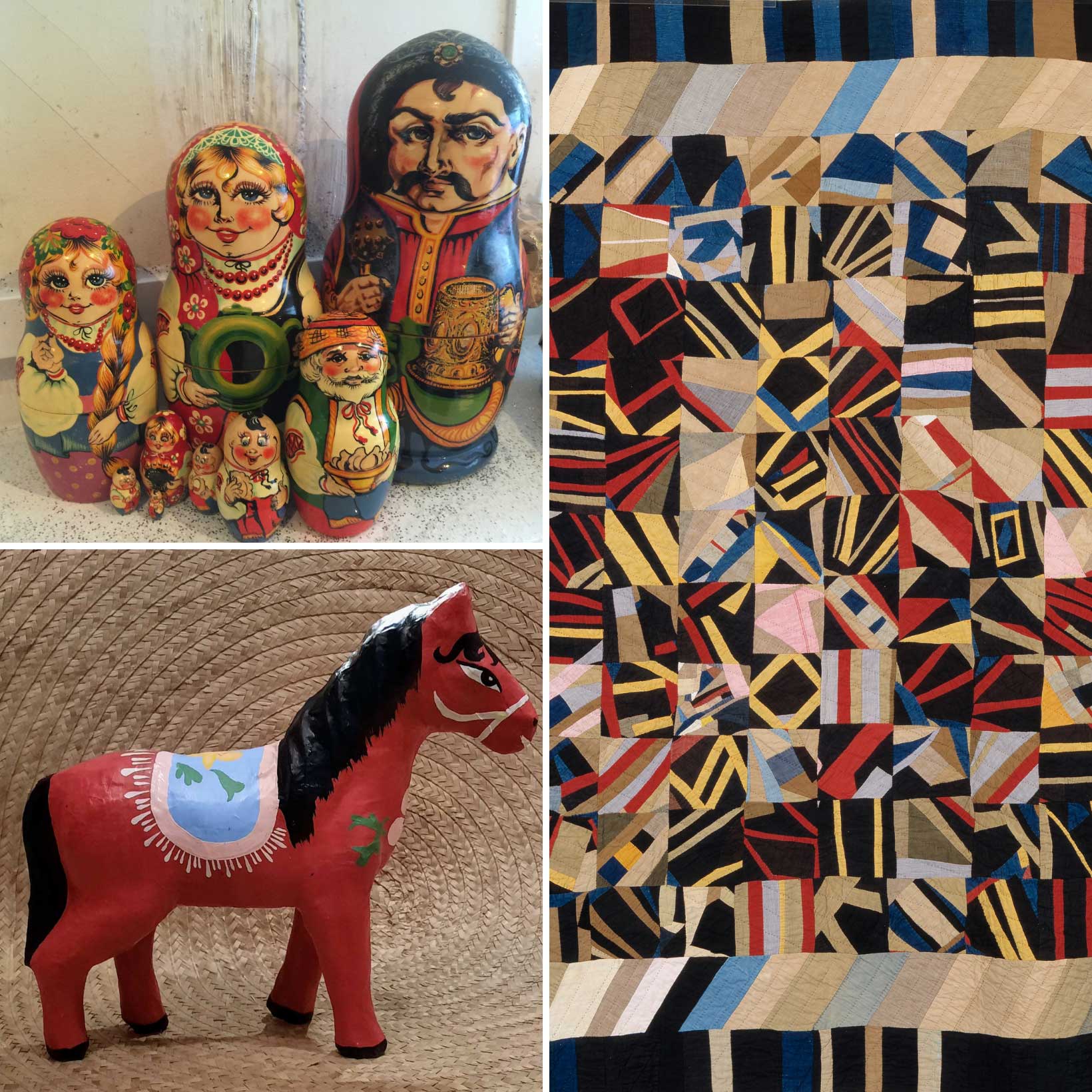
Folk art encompasses the cultural and artistic expressions of a group of people. Folk art exists across various mediums, from woodwork, dance, poetry, and paintings, which often express a practical function and aesthetic appeal, merging with applied arts. Even so, folk art remains distinct because it captures cultural identity, incorporating an area’s traditional practices and heritage in its process and execution. Notable examples of folk art include Russian Matryoshka dolls, Swedish Dala horses, Filipino taka, and Amish quilt art. All four demonstrate the fusion of artistic craftsmanship with cultural narratives, reflecting the values and history of their respective communities.
Folk art represents human expression from a vernacular perspective, being present across cultures and art movements since antiquity. Therefore, it’s possible to categorize folk art by regional trends and artists (particularly painters) from specific periods. For example, Rosemaling is a form of Scandinavian decorative painting popularized during the 18th century that captures the folk art tradition of the region.
Meanwhile, the Harlem Renaissance reflects African-American arts and culture flourishing during the early 20th century, featuring works like Street Musicians and Sowing by William H. Johnson. Other notable folk artists and compositions include Three Black Cats by Maud Lewis, Sugaring Off by Grandma Moses, and Mexican alebrijes by Pedro Linares.
8. Craft

Craft art refers to objects created through specific disciplines with decorative and functional purposes in mind. Crafts often rely on specialized tools and skills. Consequently, the art form encompasses various craftsmanship, including woodworking, knitting, embroidery, pottery, glasswork, and textiles. These types of crafts frequently serve practical purposes and align with applied arts. However, craft art is a distinct type of artistry because it emphasizes mastering techniques and creating specialized and sometimes one-of-a-kind objects. Craft arts take into account the skill, intentions, and materials of the object made, providing a practical dimension while exemplifying human ingenuity.
Humans have demonstrated craftsmanship since the first tools were made. However, as an art form, crafts stem from a long history of self-expression and practical necessity not governed by any one movement or period. Creative trends like the Arts and Crafts Movement brought prominence to the value of handmade items and the individual artisan. It emphasized traditional craftsmanship over mass-produced goods, revitalizing interest in craft disciplines as services and art forms.
Contemporary endeavors continue this philosophy, with hobbyists and professionals creating crafts to express themselves and fulfill functions. Notable artisans additionally exist, including George Nakashima, Anni Albers, Sarah Zapata, and Beth Lipman, whose work exemplifies creative prowess and craft mastery.
9. Martial arts
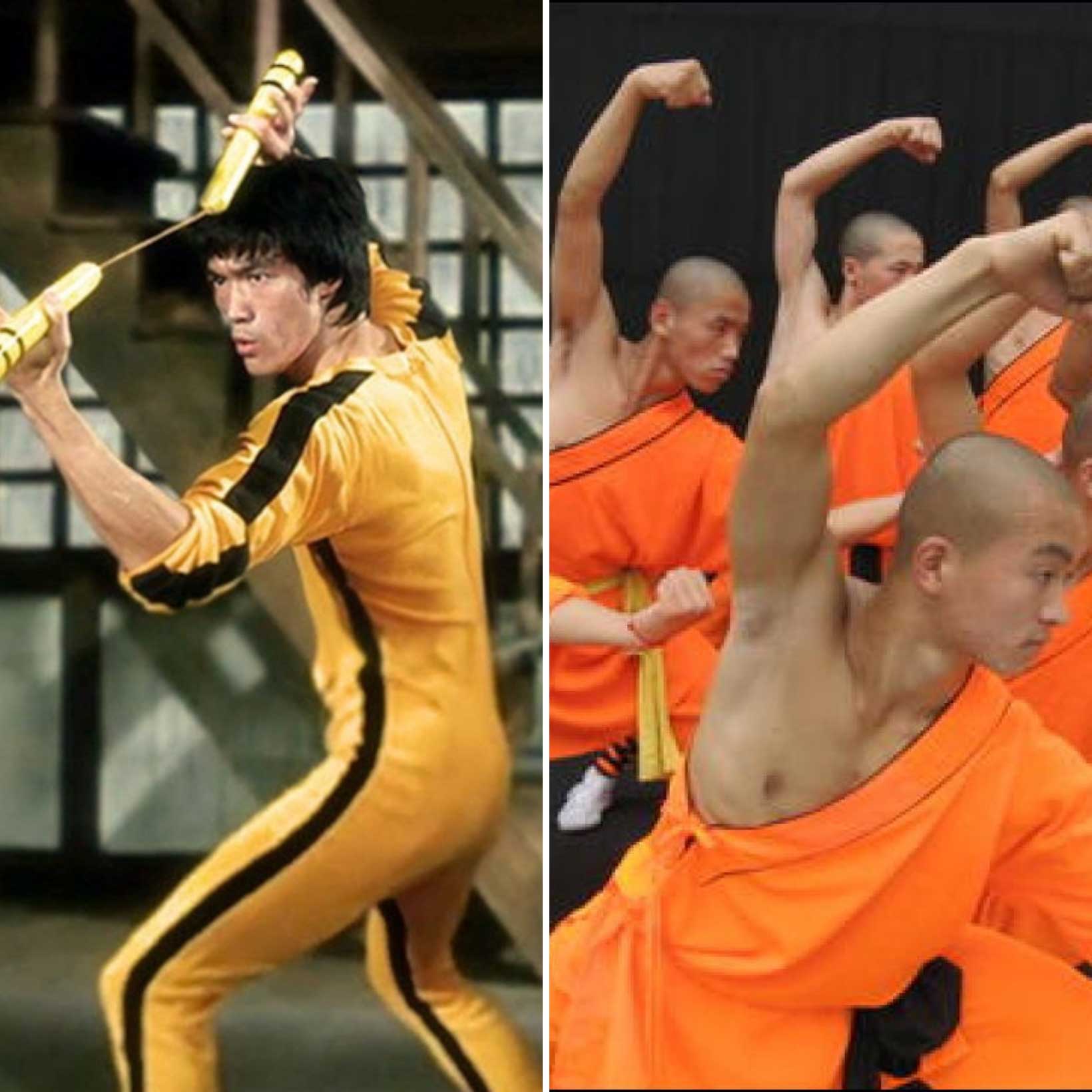
Martial arts comprises the styles, philosophies, traditions, and disciplines surrounding physical combat, like kung fu, judo, karate, kendo, and taekwondo. Classifying martial arts as an art form is a complex concept, prompting contemplation about the nature of art. It’s categorized as such because it’s comparable to the performing arts. The human body is a vehicle of expression in martial disciplines, and live or recorded movements communicate ideals and evoke emotions such as awe. This is evident in choreographed sequences that convey principles and philosophies through visual, rhythmic sequences, similar to dancing.
Additionally, the continuous refinement of techniques and the development of distinct styles within martial arts parallel the creative innovation and schools of thought in art movements. Moreover, martial arts intersects with other types of art, inspiring or being inspired by films, paintings, and literature. One notable example is Bruce Lee’s legacy, which revolutionized martial arts practices and left a lasting impact on film. The subjective nature of art makes it challenging to categorize martial arts as a creative form universally, but disciplines, particularly Eastern ones, often link to philosophies, movements, and cultural ideas that we can interpret as a form of art and translate into other artistic mediums.
Consequently, the connection between martial arts and art is multifaceted, ranging from visual representations of techniques to incorporating philosophical principles into literature, film, and other creative mediums. Notable martial artists such as Jackie Chan, Bruce Lee, Ip Man, and Mas Oyama have significantly contributed to popular culture and inspired creative works through their mastery, even if their primary recognition is for martial arts skills rather than traditional artistic endeavors.
How to classify different forms of art?
Classifying different forms of art requires analysis of a piece’s components. This includes the artist’s intention, the process of its creation, its medium, and the desired audience. Art forms often intersect, so it’s helpful to categorize different types of human expression to understand art’s purpose. The list below summarizes the methods of classification.
- Intention: The artwork’s intent reveals how people should interact with a piece. For example, the performing arts are meant to be appreciated by an audience, visual arts are meant to be experienced through the visual senses, and applied arts must be functional and aesthetically pleasing.
- Process: The process of a composition’s creation highlights the skills, techniques, and styles employed to bring an idea into reality. All art requires creativity, but how this creativity manifests is different for every art form. For instance, digital art, such as digital painting, requires software programs, while craft art requires knowledge of a typically hands-on discipline, such as knitting or woodworking.
- Medium: An art form’s medium helps to categorize it according to traditional distinctions. Art is consumed visually and serves no physical function, which generally corresponds to visual arts. Compositions recorded on film to express a narrative are categorized as motion pictures. Meanwhile, literary arts encompass the written form, whereas physical, combative movements correlate to martial arts.
- Audience: The type of audience an artist wants to convey ideas to shapes its classification. For example, graphic design is a type of applied art used to communicate specific concepts to equally specific audiences, such as illustrated advertisements. Meanwhile, conceptual art emphasizes ideas over aesthetics or function. The goal may be to inspire conversation or provoke thought toward a specific group of people, calling into question the artist’s purposes.
How are different forms of art used in education?
Different art forms are used in education to inform, engage, and teach students skills. The arts in educational environments serve various functions depending on the type of art. The list below summarizes these concepts.
- Visual arts: Visual arts such as painting and sculpting help refine motor skills and nurture creative vision. Visual arts convey information, providing viewers with knowledge or even misinformation about historical events.
- Music: Performing arts, such as music, teach us how to evoke emotion and communicate. Learning to read sheet music and play an instrument provides an understanding of rhythm, melody, and harmony and how these concepts express ideas and connect with listeners.
- Dance: Nurses use different forms of dancing, discipline, and provide stimulation. Students gain a physical and creative outline, promoting fitness and teaching young dancers to communicate emotions through movement.
- Theater: Theater teaches emotional intelligence, storytelling, and the importance of collaboration as different disciplines merge to create plays. Theater is additionally a tool for language and history, informing students of the societal values of different periods and how words can convey striking narratives.
- Literary arts: Literature and writing foster language and communication skills. Analyzing and practicing the written form helps students learn the power of narratives and how these functions shape movements, encourage change, and inspire connection even centuries after a work is published.
How are different forms of art used in politics?
Art forms are used in politics to invoke change, spread propaganda, and generate support. The following types of art achieve influence.
- Graphic design: Graphic design is fundamental to politics as it broadcasts aesthetically pleasing yet impactful messages. Graphic design appears in war propaganda, such as in the case of J. M. Flagg’s Uncle Sam recruitment posters, and in political campaigns, such as former President Obama’s 2008 “Yes We Can” slogan and the “Hope” poster by Shepard Fairey.
- Digital art: The shareable nature of digital art transcends information boundaries and stimulates opinions about politics. Digital art eclipses everything from infographics to digital illustrations, providing commentary and political messages to a diverse audience.
- Music: Music is a rallying tool, fostering kinship among political believers. For instance, protests often use chants to encourage momentum and highlight outrage or support over certain events. Likewise, songs transmit political messages ranging from patriotic beliefs to anti-war sentiments, such as that of “Zombie” by The Cranberries.
- Literary arts: Literature offers critique, disinformation, and analysis across the political spectrum. Writers often use the written form to spread their beliefs, hailing or discrediting political movements in hopes of spurring conversation and change. This varies broadly, from literature cementing nationalism to think pieces on womanist ideals.
How are different forms of art used in relationships?
Art forms such as jewelry design, visual arts, dance, and literature are used in relationships to communicate sentiments and acknowledge achievements and status. The examples listed below illustrate how this is achieved.
- Jewelry design: Jewelry design is often used to express sentiments. For example, humans create and wear jewelry, such as engagement rings or wedding bands, to represent their loyalty to another person. Humans additionally wear items lockets with pictures of lost loved ones as symbols of remembrance and gift jewelry to express affection.
- Paintings and drawings: Paintings and drawings convey admiration of someone’s beauty and status. This is often done through portraits. For instance, artists dedicate portraits to their muse and lovers, whereas prominent figures such as monarchs or political leaders will commission portraits to convey and record their importance.
- Dance: Dancing acts as a form of communication. For example, humans use dancing to physically connect and entertain each other, as exemplified by social and folk dances. Even specific disciplines, like the waltz and salsa, express sentiments such as love or lust, typically for the entertainment of an audience.
- Literary arts: Literary disciplines such as poetry communicate feelings not grasped by visual arts or verbal dialogue. Poetry often commemorates and conveys sentiments such as love to specific persons. For instance, “Do not go gentle into that good night” by Dylan Thomas is believed to have been written for his dying father, highlighting the writer’s grief and adoration.
How to define art?
Defining art is a subjective process because art is the culmination of human creativity, emotions, and ideas. Art conveys these abstract concepts in a tangible form, offering a means of expression as diverse as the human experience. Defining art reflects this diversity; humans have different opinions on whether a composition should be regarded as art based on their experiences and values.
An alternative approach is to define art according to traditional characteristics, such as color, space, dimension, intent, and analogies. Compositions result from creative vision, which correlates to specific elements and techniques artists employ according to their chosen mediums. However, conceptual, performing, and folk art forms often contradict traditional classifications. For instance, conceptual pieces emphasize ideas rather than composition, performing arts correlate to albums and movies that are commercial items, while folk art is rooted in cultural traditions that have a functional or ritualistic purpose rather than necessarily an artistic one. Consequently, there is no strict definition of art. What is and isn’t art is up to the viewer and the creator.

